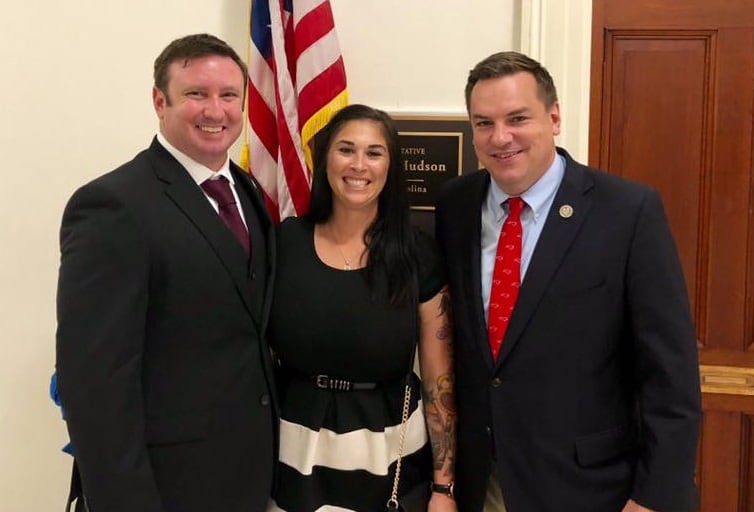The details behind an historic law change allowing service members to file medical malpractice claims for damages against the Defense Department were laid out for the first time by the federal government on Thursday.
For military advocates, troops and families who have suffered injuries or death in the military medical system, Thursday’s guidance was a long time coming, but welcomed nonetheless.
Service members have had limited options for redressing such wrongs due to the Feres doctrine, which has banned service members from suing the military for decades.
But the guidance posted Thursday to the Federal Register lays out how troops will be able to file administrative claims stemming from military medical malpractice.
And while advocates for overturning Feres called the change a step in the right direction, they question the transparency of the DoD process and whether claimants will be afforded the same level of rights that they would have in a civilian courtroom.
While the particulars of the policy were only announced Thursday, the services began accepting claims in January 2020 and the claim queue has ballooned.
All told, at least 278 claims by troops or surviving families seeking $3.25 billion had been filed as of last month, according to the services.
Of those, soldiers and their families have filed 110 claims seeking roughly $1.2 billion, while the Air Force has received 87 claims totaling another $1.2 billion.
The Navy Department, which includes Navy and Marine Corps claims, has received 81 filings seeking $850 million in damages.
This new process will go into effect 30 days from Thursday’s publication, and any money awarded under the new system will be in addition to the military’s existing, standardized compensation system for things like training mishaps, combat injuries and other injuries or deaths sustained in the line of duty.
Any reservist claims must be for deaths or injuries that happened while the claimant was in a federal duty status, according to the rule.
While those filing such claims will be able to get copies of relevant medical records, there is no equivalent to the discovery process in this new system, a point of concern for some troops’ advocates.
In civilian courts, discovery allows each side to request and receive information from the other side that is relevant to the case.
It is often a key step for plaintiffs building their case.
No discovery process means that claimants or their attorneys won’t be able to question the medical personnel who made the mistakes, according to Dwight Stirling, an attorney and National Guardsman who founded the non-profit Center for Law and Military Policy and has advocated for overturning Feres.
RELATED

“How can an injured service member figure out what a doctor did wrong if he can’t ask the doctor questions?” Stirling said. “Civil suits are vastly fairer to service members than this claims process.”
The law change does not delineate who will be on the panels deciding claims, Stirling noted, and “the entire review process is enshrouded in darkness.”
“Who will be on the panels?” he said. “What are their qualifications and biases? The rules allow claims to be evaluated by nameless officials in secretive offices. The lack of transparency is deeply concerning.”
DoD officials did not immediately clarify how such claims will be reviewed.
Stirling also questioned whether the claims process could be free from conflicts of interest.
“Military officials will be deciding if other military officials made mistakes,” he said. “No agency is good at policing itself. It’d be far better if courts of law were allowed to conduct the claims process.”
The law change was part of the 2020 National defense Authorization Act and allows “members of the uniformed services or their authorized representatives to file claims for personal injury or death caused by a DoD health care provider in certain military medical treatment facilities.”
Such a sea change in service member rights may not have ever occurred had it not been for Richard Stayskal, a retired Special Forces noncommissioned officer who was diagnosed with lung cancer in 2017 after military health providers failed to see a 3-centimeter mass in one of his lungs during a pre-training CT scan.
RELATED

Stayskal received the cancer diagnosis from a civilian pulmonologist after military physicians told him he just had asthma or pneumonia when he reported trouble breathing.
Shepherded along by Tampa attorney Natalie Khawam, his case eventually caught the attention of lawmakers and Rep. Jackie Speier, D-Calif., introduced the Sgt. First Class Richard Stayskal Military Medical Accountability Act in 2019, and it became part of the 2020 defense bill.
During a press conference Thursday, Stayskal thanked lawmakers and everyone else who helped make the law change possible.
“I’m glad it’s here, but there’s many more things to do,” he said. “It’s a great day for the military, and service members are able to be made whole.”
A substantiated claim for less than $100,000 will be paid out directly by the Pentagon, while the Treasury Department will review and pay claims that DoD values above that amount.
Claims will generally have to be filed within two years after the alleged incident or two years after the claimant reasonably deduced that an injury or death was due to medical malpractice.
Unlike in a civilian court case, there will be no judicial review of decisions.
“The settlement and adjudication of medical malpractice claims of members of the uniformed services is final and conclusive,” the new regulation states.
RELATED

Because claimants will have the burden to substantiate their claims, they can include any evidence and insight from outside experts regarding the claim’s merit, according to the rule.
DoD can also request further records from the claimant as needed.
Claimants will have to prove by a preponderance of evidence that “a negligent or wrongful act or omission” by a DoD health care provider was the proximate cause of harm suffered by the member, and DoD will only be liable for the portion of harm attributable to the medical malpractice of the D0D provider.
Decision makers will factor in the economic damages of the malpractice but will also consider things like pain and suffering caused.
Claimants who are initially denied will have a right to appeal that decision, but they cannot file any additional materials to support that appeal unless DoD requests it.
Claims must be filed through the services.
Army: Claims should be presented to the nearest Office of the Staff Judge Advocate, to the Center Judge Advocate of the Medical Center in question, or with US Army Claims Service, 4411 Llewellyn Avenue, Fort Meade, Maryland 20755, ATTN: Tort Claims Division.
Navy: Information, directions and forms for filing a claim may be found at https://www.jag.navy.mil/. Claims should be mailed to the Office of the Judge Advocate General, Tort Claims Unit, 9620 Maryland Avenue, Suite 205, Norfolk, Virginia 23511-2949.
Air Force: Claims should be presented either at the Office of the Staff Judge Advocate at the nearest Air Force Base, or sent by mail to AFLOA/JACC, 1500 W Perimeter Road, Suite 1700, Joint Base Andrews, MD 20762. POC: Medical Law Branch, AFLOA/JACC 240-612-4620 or DSN 612-4620.
Geoff is the managing editor of Military Times, but he still loves writing stories. He covered Iraq and Afghanistan extensively and was a reporter at the Chicago Tribune. He welcomes any and all kinds of tips at geoffz@militarytimes.com.









